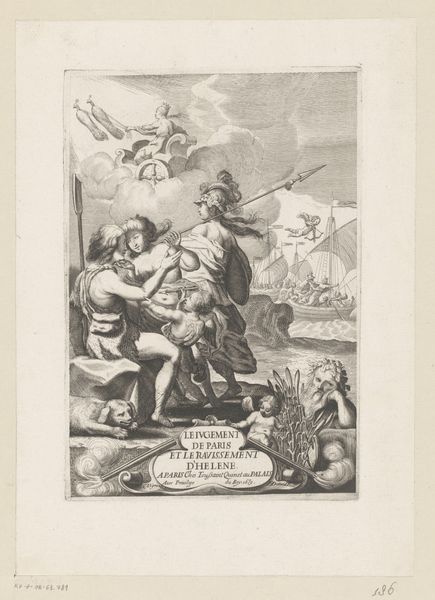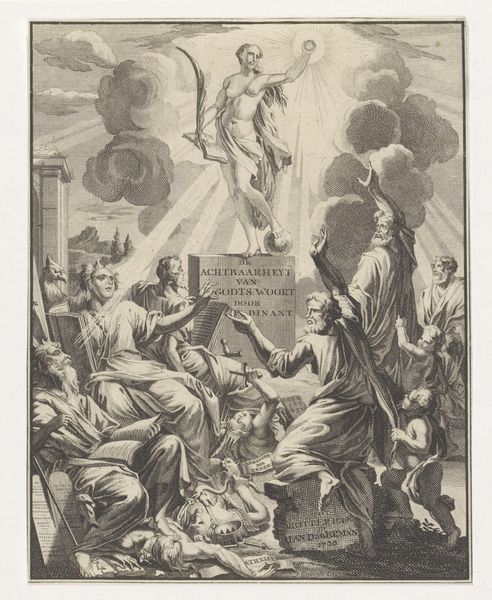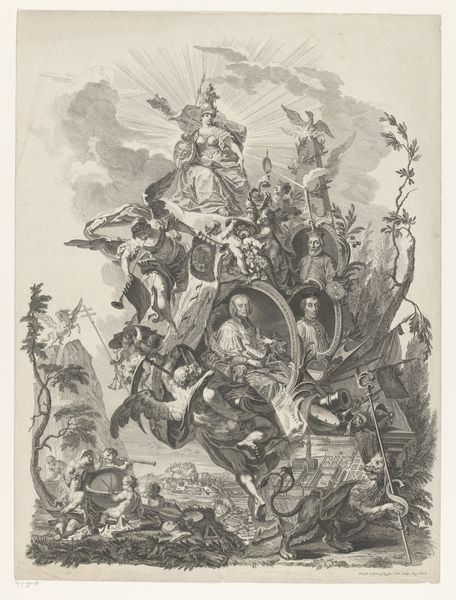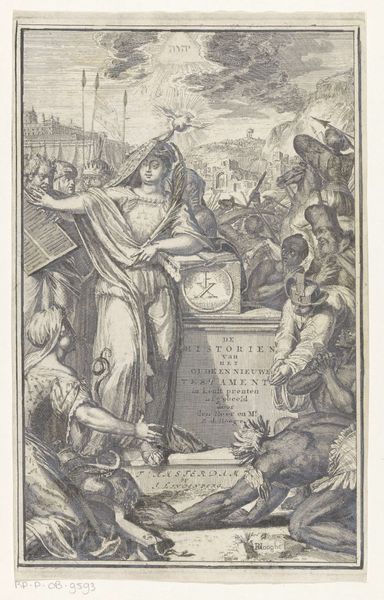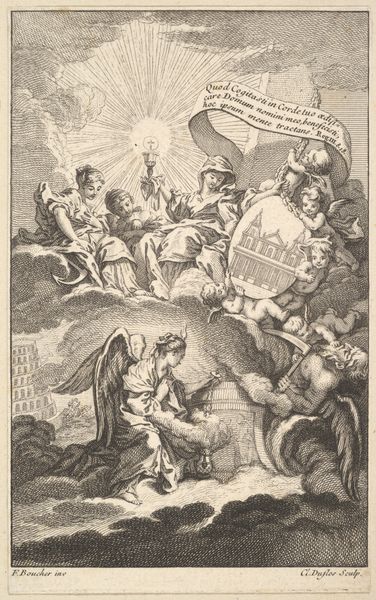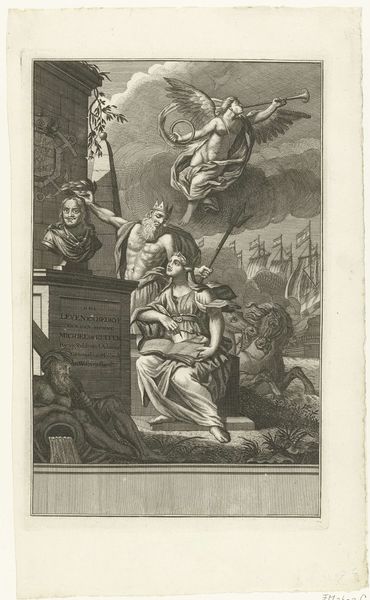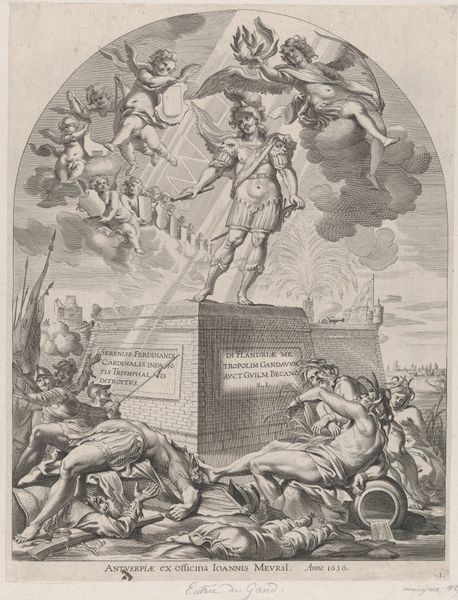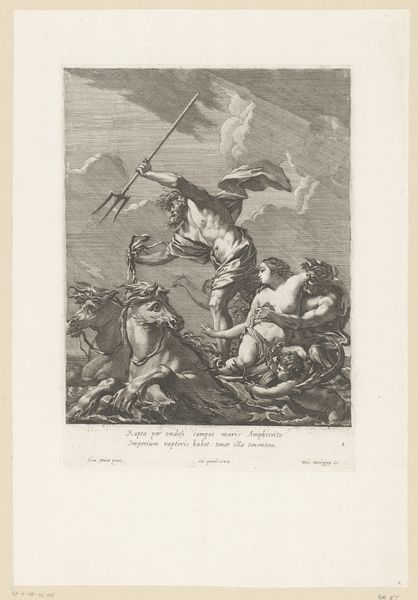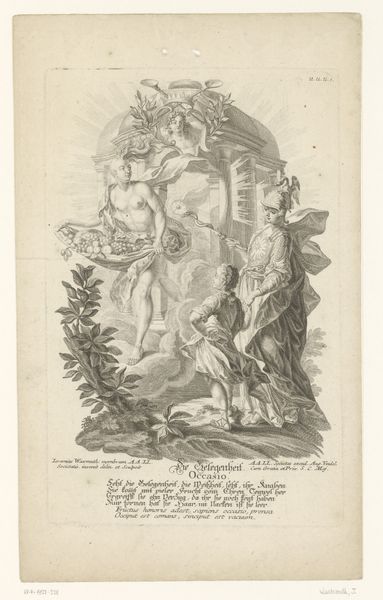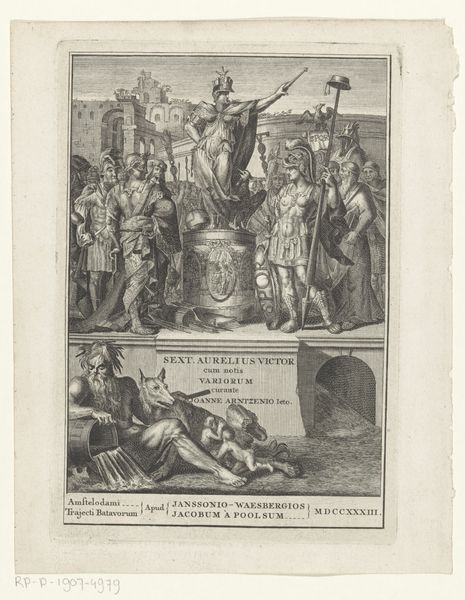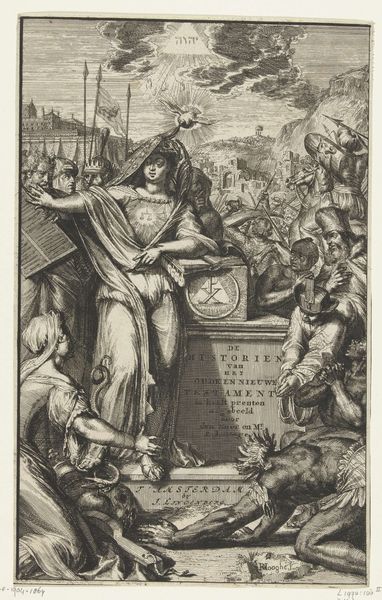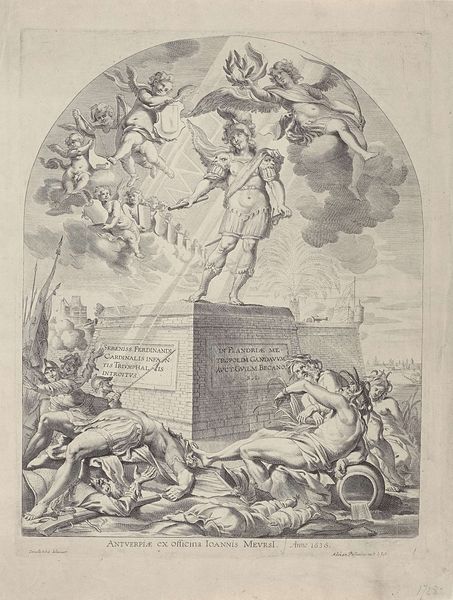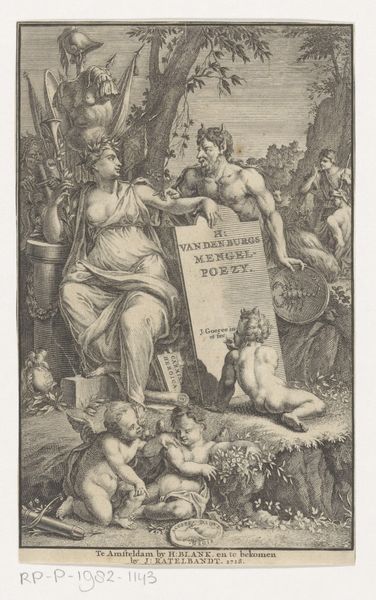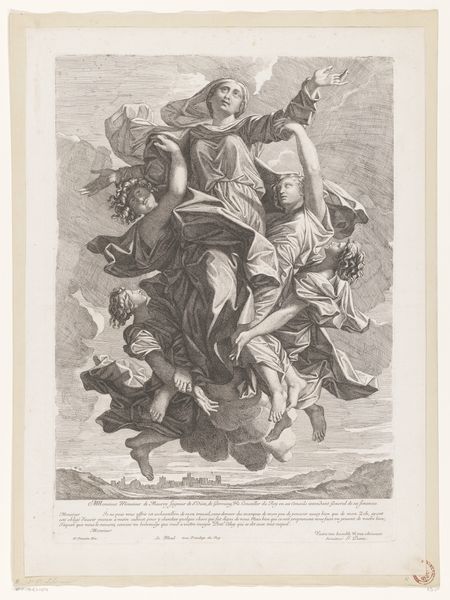
metal, engraving
#
allegory
#
baroque
#
metal
#
old engraving style
#
history-painting
#
engraving
Dimensions: height 403 mm, width 256 mm
Copyright: Rijks Museum: Open Domain
Editor: So, this engraving, "Atlas draagt de hemelglobe op zijn schouders," created around 1689 by Gerard de Lairesse, I believe. It's a detailed Baroque piece from the Rijksmuseum. I'm immediately struck by its intensity and the almost overwhelming amount of detail. It’s like a story crammed into a single frame. How do you even begin to unpack something like this? Curator: It's quite a feat of visual storytelling, isn't it? When I look at it, I think of layers – not just of imagery, but of meaning. The figure of Atlas is so prominent, weighed down, as we all sometimes feel. Do you see how Lairesse uses the figures surrounding Atlas to build on this feeling of burdened responsibility? It reminds me of an orchestra tuning up; so many sounds competing before resolving into harmony, or perhaps discord. Editor: I hadn’t thought of the other figures like that. So the woman with the trumpet represents fame spreading, and the seated, older figure next to the globe? It looks like knowledge or scholarship of some kind? Is he a counterweight? Curator: Perhaps, and yet... there's an ambivalence here, I think. A question lingers – is it truly worth it? Consider, for a moment, the almost weary expression of the woman with the tablet – what knowledge are we chasing? Is that weight worth bearing if we are too tired to appreciate the journey itself? Do we sacrifice a part of ourselves for knowledge, or does knowledge demand sacrifice of us? Editor: I see what you mean. I was initially focused on the visual overload, but now I’m thinking more about the conceptual weight of the piece. So not just an engraving about cartography, but one about life itself, shouldered burdens. Curator: Precisely! Maybe Lairesse wants us to question, as much as admire. Editor: Thanks! Now I can see the engraving inviting something closer to thoughtful contemplation than an objective analysis. It makes the experience of looking at the work more emotionally accessible. Curator: My pleasure! That's the marvelous thing about art – it has the capacity to constantly reveal itself and ask us probing questions in turn.
Comments
No comments
Be the first to comment and join the conversation on the ultimate creative platform.
